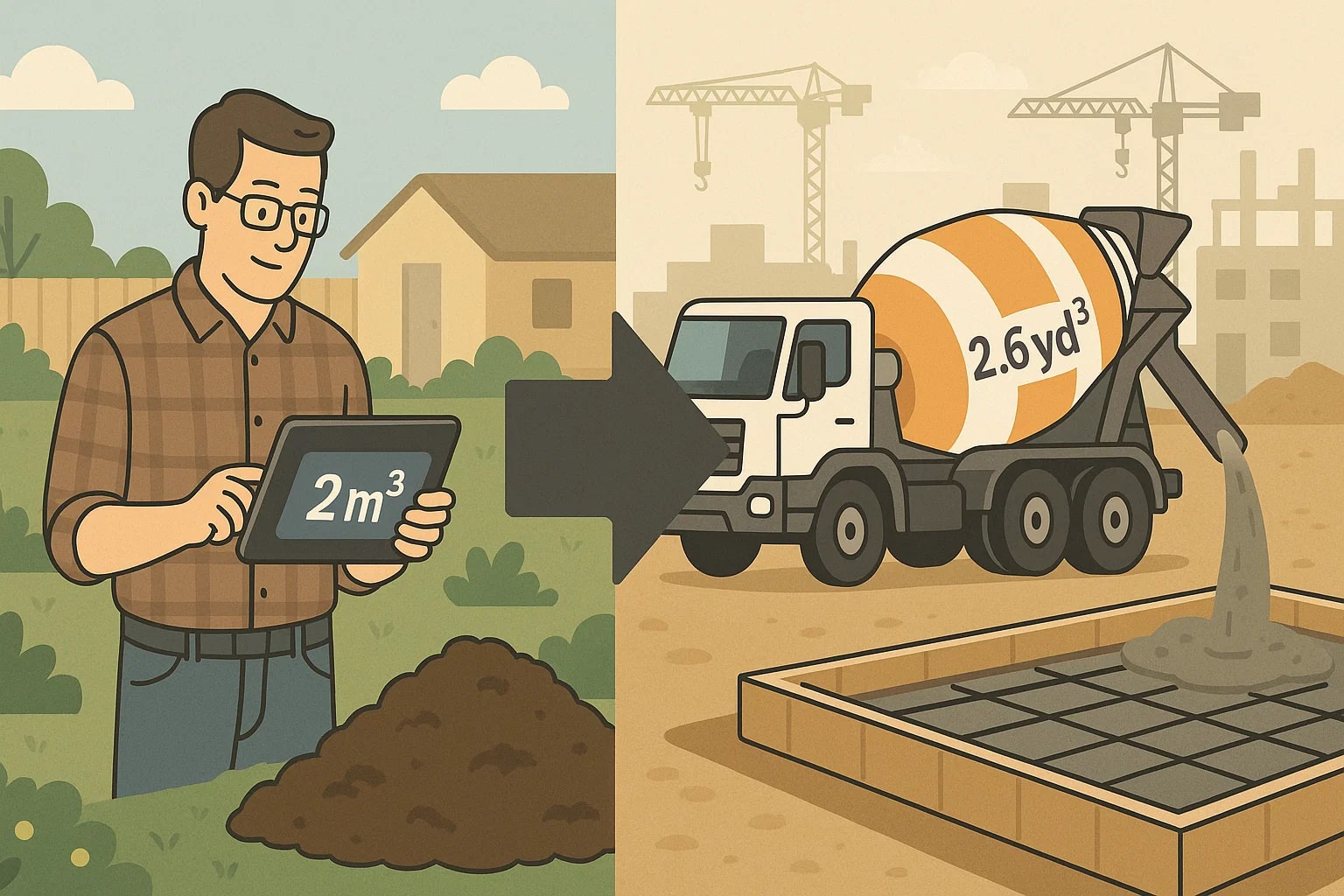cubic meter to cubic yard – How to convert m³ to yd³
The conversion from cubic meters to cubic yards links the global metric system to the imperial units used in the United States. While cubic meters dominate in science and trade, cubic yards remain the go-to measure in construction, landscaping, and bulk supply in the US. Knowing how to convert between them helps professionals and homeowners keep projects accurate.
What is a cubic meter (m³)?
A cubic meter is the volume of a cube with sides of 1 meter. It equals 1000 liters or about 1.308 yd³. This unit is standard worldwide for large-scale measurements in engineering, environmental science, and shipping.
What is a cubic yard (yd³)?
A cubic yard is the volume of a cube with sides of 1 yard (3 feet). It equals 27 ft³ or about 0.7646 m³. This unit is popular in the US for concrete, gravel, mulch, and other bulk materials.
Conversion formula – cubic meter to cubic yard
The relationship is fixed, making the math straightforward.
The base equivalence is:1 m³ = 1.308 yd³
To convert cubic meters to cubic yards:1 cubic meter = cubic yard × 1.308
To convert cubic yards to cubic meters:1 cubic yard = cubic meter ÷ 1.308
Examples:
-
5 m³ ≈ 6.54 yd³ -
10 yd³ ≈ 7.65 m³

For fast conversions beyond these units, Jetcalculator’s Volume Converter and its full set of Conversion Tools deliver accurate results across metric and imperial systems.
Do you know?
-
Landscaping supplies: Soil, gravel, and mulch are almost always sold in yd³ in the US, but project specs written internationally may call for m³.
-
Concrete orders: American contractors buy concrete in cubic yards, while global blueprints for the same project list cubic meters.
-
Shipping loads: International cargo documents require m³, but American warehouses often list capacity in yd³.
Landscapes, driveways, and blueprints
This conversion is especially visible in outdoor projects. A homeowner may calculate a garden bed in 2 m³, while the supplier quotes soil in 2.6 yd³. On construction sites, architects write designs in cubic meters, but US-based contractors read them in cubic yards to order truckloads of concrete.
The ability to move smoothly between these units prevents costly miscalculations and ensures that both systems speak the same language.

A single formula behind heavy lifting
The formula 1 m³ = 1.308 yd³ isn’t just arithmetic. It underpins everything from small landscaping tasks to major building projects. A driveway foundation, a patio design, or even a large-scale shipping order relies on this conversion to stay consistent across countries.
By keeping this formula in mind, you bridge metric and imperial units, making it easier to scale projects no matter where they’re planned or built.

